It appears there is no end to things breaking and ending up in Kuzyatech lab. Today’s patient is a Seagate FreeAgent Theater+ media streaming box that decided to stop noticing USB drives. The box is a nice little device that can play audio and video content from the network or from one of the three local USB ports: front, rear or a dock-like middle one that’s used to connect Seagate’s own portable hard drive. Both front and back ports were dead. Well, time to take it apart! First thing we notice after taking four rubber feet and screws under them off, is that there is still another screw somewhere in the middle. As usually, it’s under the serial number label. But wait, there are two of them:
Once the middle screw is out, it’s an easy case to pop open:
No bulging caps on this one I am afraid! Though I did find one solder ball:
The back of the board is peculiar- big blob of solder under the processor transfers heat to metal lined case bottom:
Let’s look at the USB ports next:
Notice empty footprints for U23 -that’s where an ESD clamping chip normally goes.
Even HDMI is not much better:
The two ports that do not work both go to a USB hub GL850G)
So we now have a theory- no ESD protection on external USB ports, plus carpeted floors and dry air- something just might get taken out. It’s a bit difficult to diagnose just by looking at the boards. But here is something to the rescue: a white unused connector on the bottom edge of the board. There is a slight chance that’s a debug port, since traces connect it to the processor.
After poking at it with a scope, it’s pretty obvious that is is indeed a debug port. Pin 1 is ground, pin 2 is 3.3V and pin 3 has serial data wiggling at 115.2k baud. So out comes my trusty Bus Pirate, which in a UART mode also has a bridge mode, and we get something that looks like a Linux boot log!
It looks like we are dealing with a Realtek MIPS chipset, that boots Linux from an encrypted image: Full log. The part that jumps at me is
ehci_hcd ehci_hcd: port 2 reset error -145 hub 1-0:1.0: hub_port_status failed (err = -32) usb 1-2: device descriptor read/64, error -71
Looks like our USB hub is in trouble. Inserting USB flash drive into either port results in no changes to the debug output. No insertion events or filesystem mount notifications appear. Well, let’s see what else we can do. The system has three USB ports, two are on the hub and the third (HDD dock) goes directly to the main processor. So the next logical strep is to try the third port, except it’s a mini USB connector hidden well inside the dock. Seeing how that port and the rear one both use identical headers, it’s a simple matter of swapping cables on the board end. So now our rear port is connected directly to the processor. Let’s insert the flash drive into it and check the log:
Hotplug: "sda" has partitions.
mount: Mounting /dev/scsi/host3/bus0/target0/lun0/part1 on /var/lock/hotplug/mount_tmp/.sda1 failed: Invalid argument
mount: Mounting /dev/scsi/host3/bus0/target0/lun0/part1 on /var/lock/hotplug/mount_tmp/.sda1 failed: No such device
1 usb block device found
device 0 is /sys/block/sda
host=3, bus=0, target=0, lun=0, port=0
It's HIGH speed device!
[System2ApDaemon.cpp,threadSys2ApExe,156]msg type = 4 ,msg len = 49 ,msg = 73 64 61 31 20 55 50 20
[Sys2ApBridge.cpp-CallBack_block_event-556] CMD - event_id = 4 MessageNumber = 1 ,MSG = sda1 UP /tmp/usbmounts/sda1 /tmp/ramfs/volumes/C:
[ExtHddScanUtil.cpp,setExtHddStatus,232] msg_type = 0 , mount_disk='/tmp/usbmounts/sda1' , mount_label='/tmp/ramfs/volumes/C:'
Some of the INQUIRY command's response:
CBM Flash Disk 5.00
INQUIRY duration=0 millisecs, resid=0
removable = 1
port 0, sda has 1 partition(s)
Hotplug: mount -t ufsd -o ro -o nls=utf8 -o umask=0 /dev/scsi/host3/bus0/target0/lun0/part1 /var/lock/hotplug/mount_tmp/.sda1 ret: 255
Hotplug: mount -t ntfs -o ro -o nls=utf8 -o umask=0 /dev/scsi/host3/bus0/target0/lun0/part1 /var/lock/hotplug/mount_tmp/.sda1 ret: 255
Hotplug: mount -t vfat -o ro,shortname=winnt -o utf8 -o umask=0 /dev/scsi/host3/bus0/target0/lun0/part1 /var/lock/hotplug/mount_tmp/.sda1 ret: 0
After another round of tests and confirmation that everything still works, we can close the case and declare it fixed for now. The only working port is the rear one, but that beats none. It also now has at least some degree of ESD protection and should last for a while. I did consider hacking things a bit more, such as wiring the harness to the front port after cutting its traces, but that was just messy.The other approach would be to chase faults with the hub chip, but seeing how it’s made by Genesis Logic, the parts are not very obtainable from reputable sources. Here is the block diagram of the system as I see it at this stage:
Conclusion: it appears bean counters won again. By saving probably 20-30 cents per unit, they managed to make them very susceptible to basic static ESD hits. But somebody got a bonus for being “efficient”..
Update March 2014: It is now possible to buy replacement GL850 chips on ebay from a Hong Kong seller for a few bucks.
Update April 2014. I’ve now received a replacement chip from the above vendor. This is how it came in:
It was taped (ugh, how much static is generated when tape is peeled off?!) to a piece of cardboard and stuck in a Ziploc bag. Figures. Since I did not have much to loose, I proceeded to install it anyways.
Well, no luck. I still get the same USB hub errors on Linux console and the two ports on the hub still do not work. I do get the 12MHz clock running on the chip, but not much else. So the replacement may indeed be damaged, or there is some other problem I have not discovered yet with the main board. To be continued…

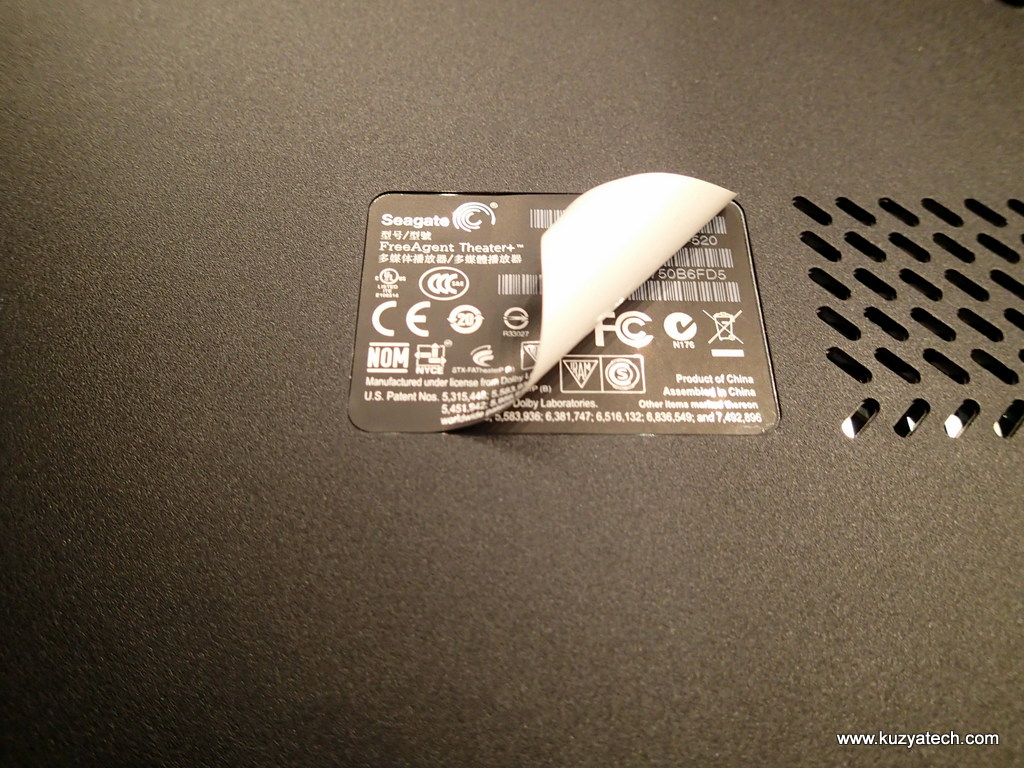
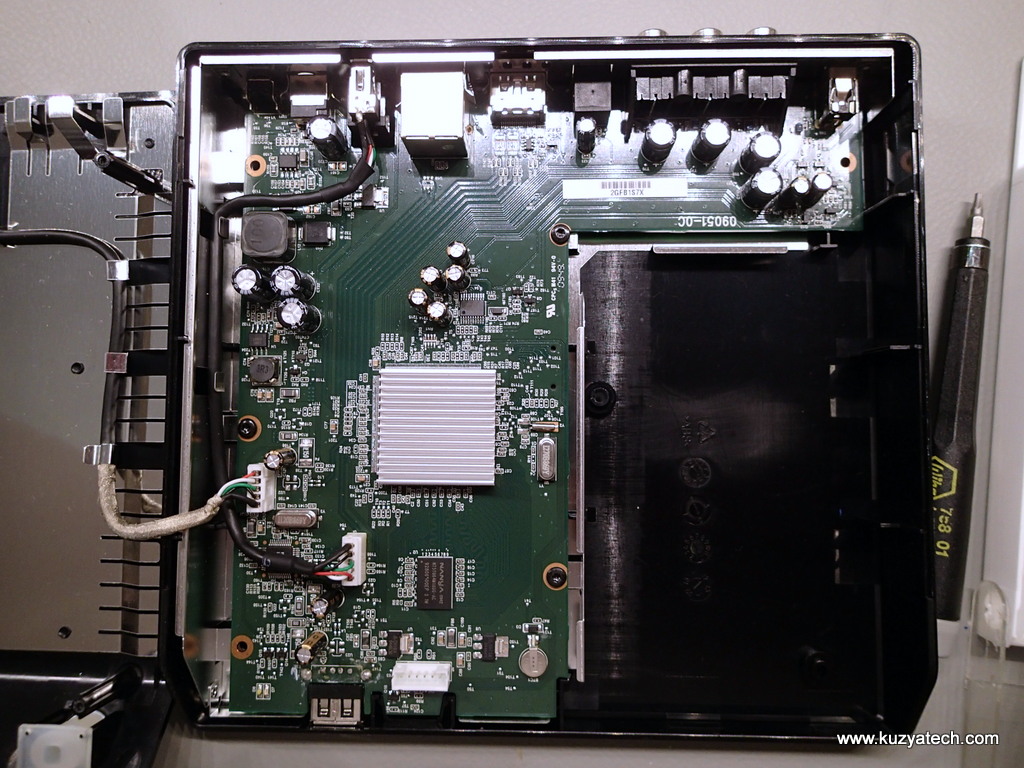



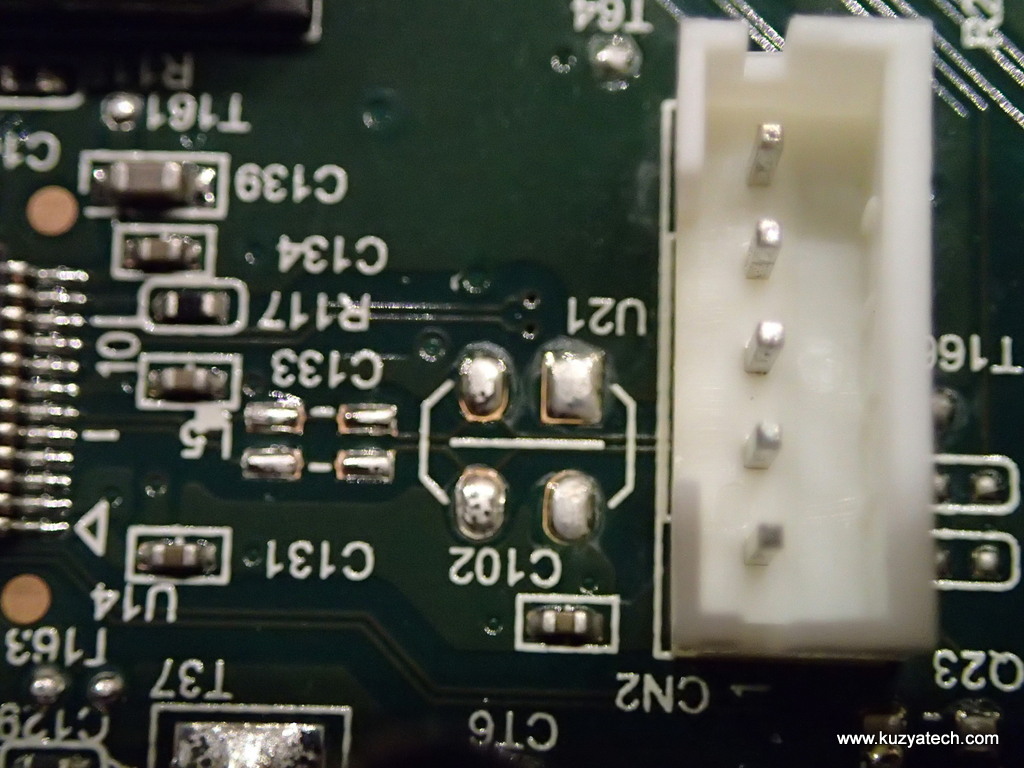
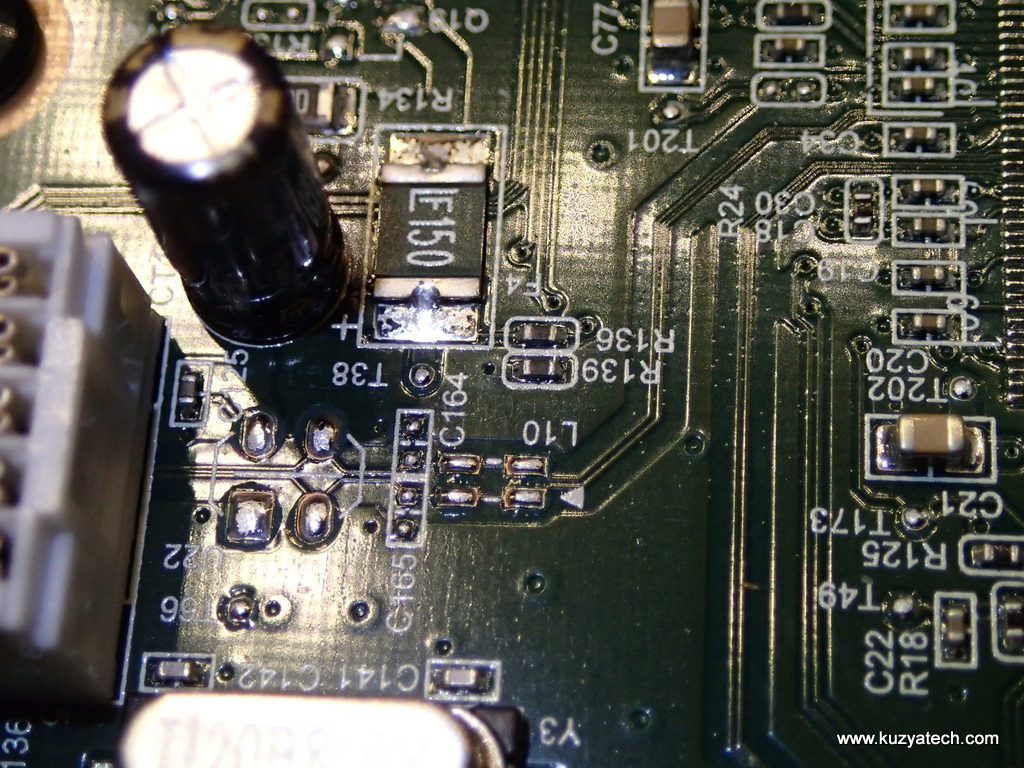


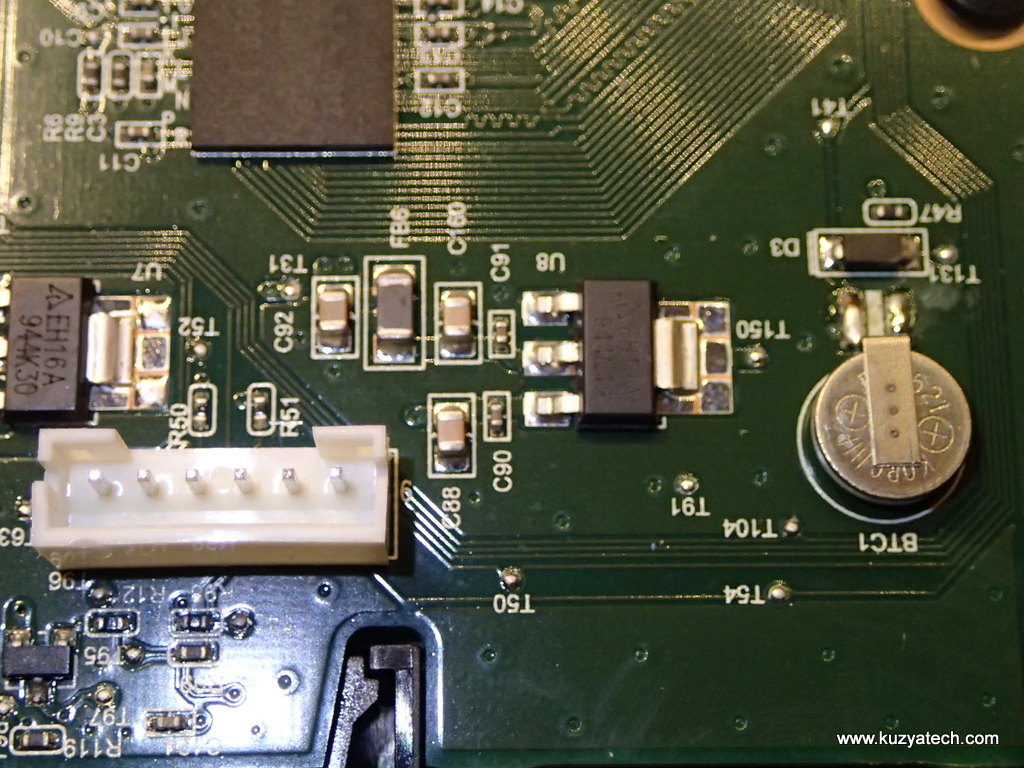


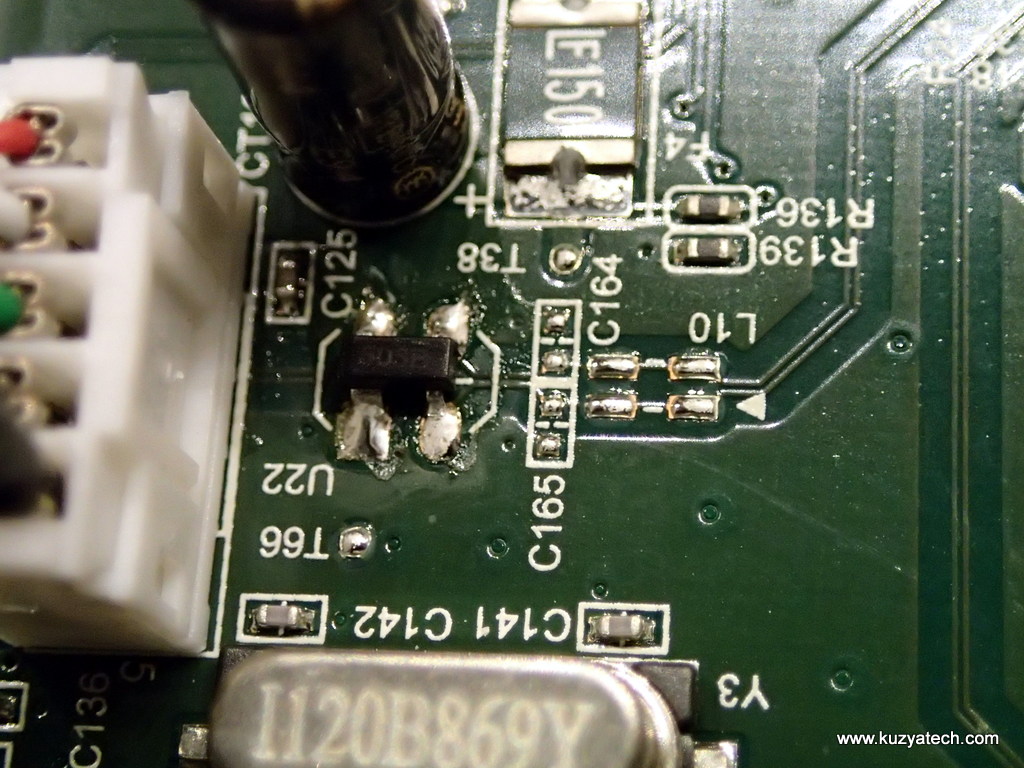
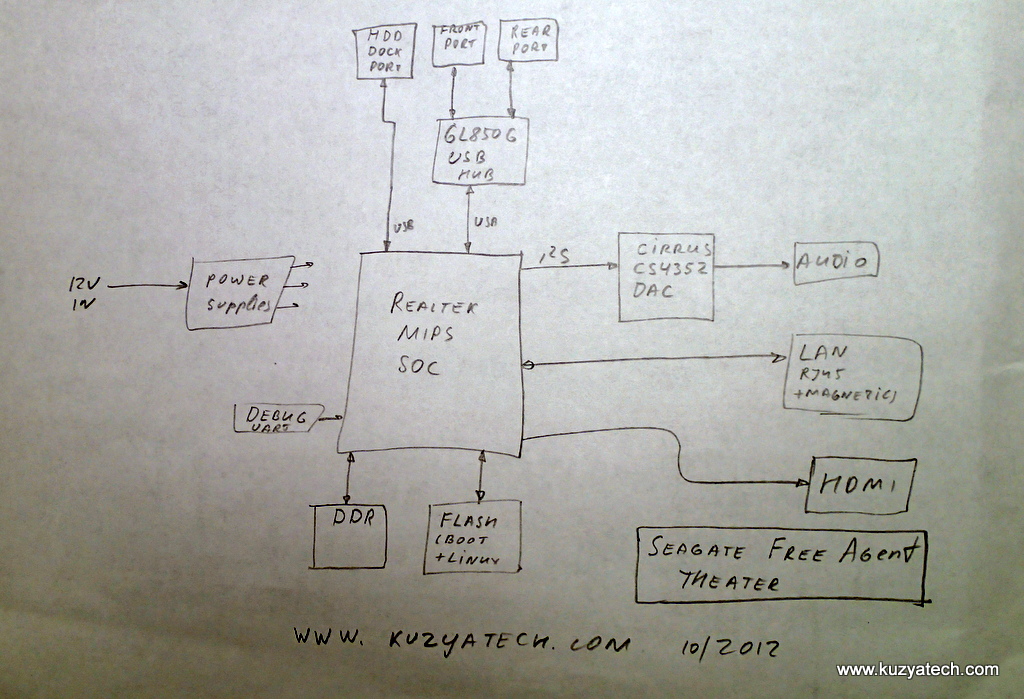
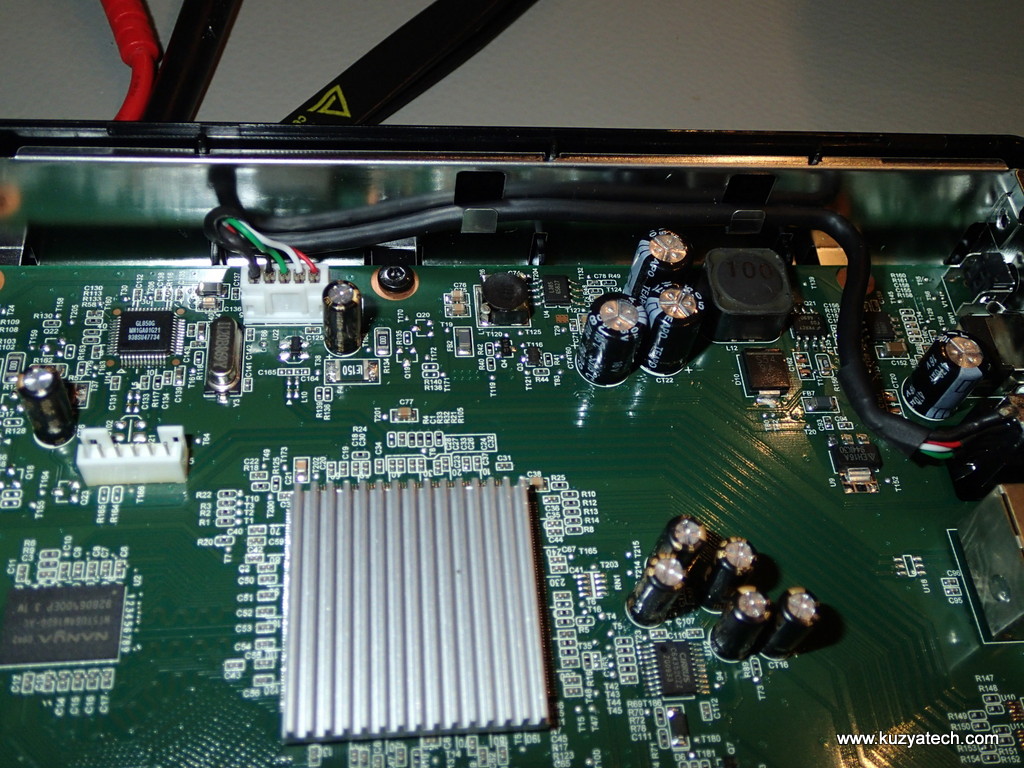
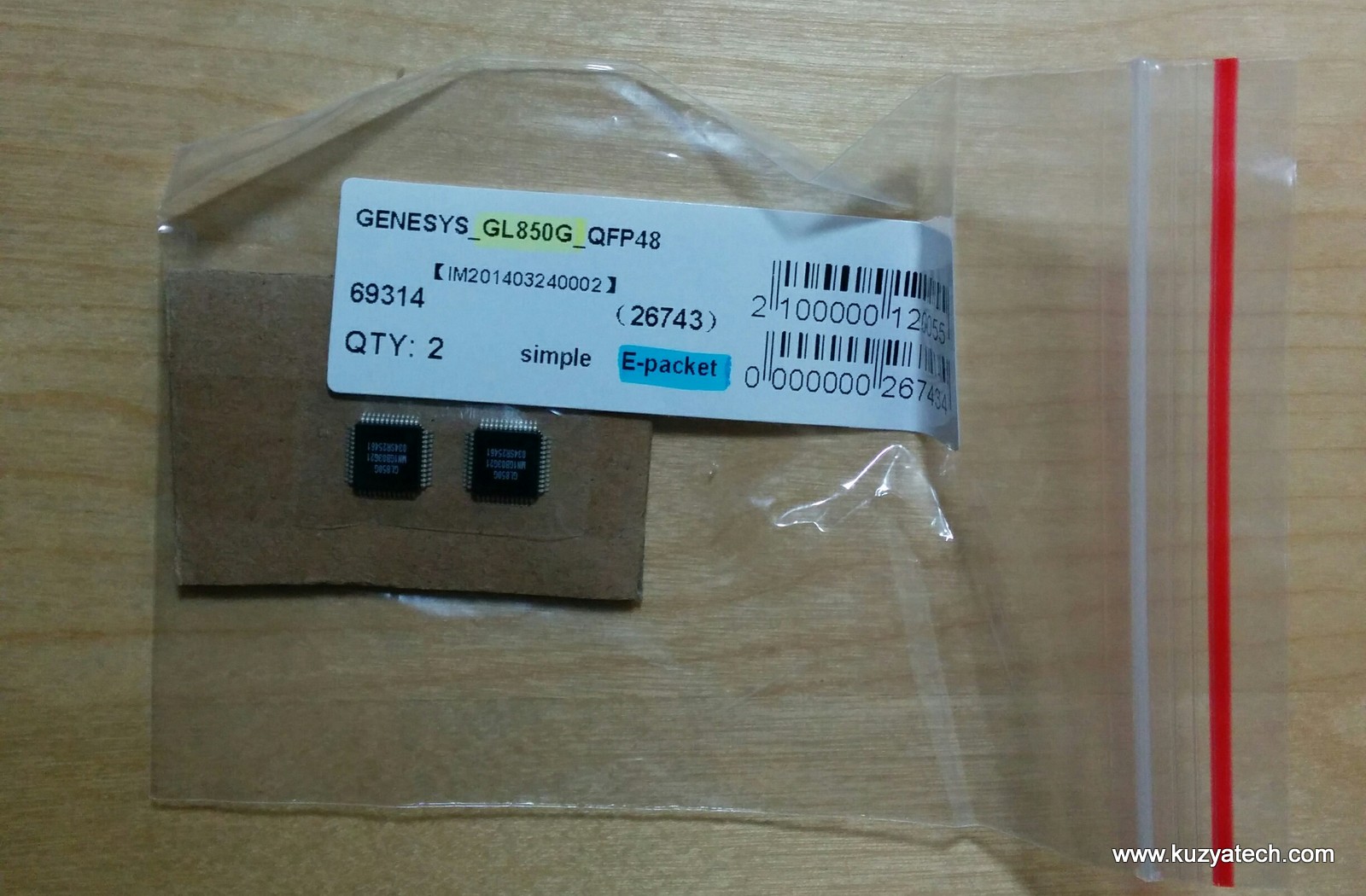

Where did you get that nice acrylic case for you BP? It’s sooo beautiful…
The case is from Riley over at https://www.synthetos.com/webstore/index.php/enclosures.html
Hi, i’m from Venezuela. I have the same problem with my Seagate Media Player, i dont have any exprience in electronics but i have some cuestions:
1) which one i must buy: SOT-143 or SP0503 TVS?
2) just soldering this ESD protection is enough for fix the USB ports?
any recomendation?
Thank you very much.
Hi,
1. SP0503 is the part number, SOT143 is just the name of the footprint.
2. No, first you need to find a working port- there are three of them on the board, and move the cable to that port. Then you add this part to prevent future damage.Just soldering the part will not make a dead port work
Thank you very much. Now i understand what you did. (sorry for my bad english). But i have another question.
i can´t find any SP0503 here in my country. So, im thinking about using the third port (mini usb) with a converter (Female mini usb to Female USB) in case that the port is still operative. so, do you think this port dosnt need any modification?
mmm sorry, please dont care about the reply. I understand that the SP0503 is obvious nedeed. Do you have another part number which will do the function of ESD protection instead of SP0503?
You could use any other ESD devices rated for high speed 5V buses such as USB. They just need to fit, not clamp below 5V and be low capacitance
Hi,
I don’t have the same problem, but it’s related to this device. It happened just a couple of days ago, when I attached 2 HDDs to the device. Something burned in there, and the whole thing doesn’t work now. The power cable has been removed and reattached, to no avail. Could you advise, please?
THANKS!
I’d check voltages on the board and on the USB connectors first
Great job!!
I had the same problem with dead front and rear USB ports and found the hard drive bay Mini USB port worked. After trying (and failing) to solder the tiny pins on a Mini USB female connector to make myself an adapter for my external HDD, I found your post. I didn’t have the tiny Torx driver but a small blade screwdriver worked to remove the screws. I did the cable swap from the drive bay Mini USB to the rear USB port and now it works!
Thanks so much for debugging this problem.
Back watching movies for no cost!
Thanks for your kind words. Makes it worth the effort to describe repairs like this to help others 🙂
Hi! Front and rear USB ports of my FAT+ also don’t work but before they’ve become not functioning the HDD port had broken. So unfortunately the method you’ve used doesn’t suit me. Is there any way to get the USB hub working or some other methods to get at least one USB port working? Thanks in advance!
Thanks for your help swapped plugs and added usb hub to rear port.
Ok, I hate to start out of the gate with this but what type of screwdriver do I need? Took the feet and sticker off and it looks like a rounded hollowed out protrusion of some sort.. Apologize in advance for my ignorance.
Excellent post. Have the same issue with the non-functioning usb ports and your post was very helpful in showing me what I could do to make it useful again.Thanks!
The usb controller can be purchased now on ebay.
These things use Torx size T7 bits.
Incidentally, I now have the second unit with the same problem and I see the GL50 chips are easily obtainable from ebay indeed. So the full repair would mean swapping the chip and installing ESD protection. Hopefully after that all ports would work. I may try that
Thank you so much for this page. I had the exact same problem and was working towards the same solution (though I was just going to get a miniUSB to USB adapter).
Your instructions showed me how easily it would be to re-route the FreeAgent Go port to the rear USB, so you saved me from having to order a miniUSB adapter.
Thanks again, it worked great for me though I’m sure this shoddily-made device will fail again. But you’ve bought me another year maybe before I have to replace it.
I own a very old FreeAgent Theater (without +) and the normal USB-port was broken (player fallen down with USB-stick plugged in). I’ve bought a Mini-USB-adapter to connect my hard drive, but that nasty little player just accept the special Seagate Go drives.
Sure I can buy a new player, but I hate it to throw away working stuff!
So I don’t gave up and find your blogpost. The idea of switching the internal cable from Go-USB to normal USB is simply brilliant and works like a charme! I need it to play ISOs cause the brand new TV don’t support that format.
The internal cable is a little bit short (I can’t close the case right now) but I’ll fix that, too.
A big thanks for givin’ me that input! 🙂
Regards from Germany
Tom
Same issue and thought wow any easy fix until I got to the center screw under the label. There was no center screw visible but what appears to be a plug of melted plastic like they injected plastic over the screw hole and then busted it flush with the base. Nice, so even drilling thru that the screw head would be filled with plastic with no way to get it out. Guess they didn’t want people fixing them….like I would buy a Seagate replacement unit anyway even if they did still sell them. Guess I will just use the center micro connector as that still works.
It could just be the “gate” leftover from molding the piece. It may mean they no longer use the screw in the middle and instead added a latch somewhere
A bit late of a reply but…though it may seem obvious after the fact…it happened to me: try to peel the sticker a bit further back, the screw is more on the side. I also stopped there and thought the same thing…I need to dremel this thing out. As I removed the sticker more, I found it was there all along.
Great work ripping into the box and getting some good info.
I never used the USB ports on mine and both were DOA when I tried them today.
Popped the case & swapped cables and had the rear port indexing a drive of media within minutes.
Thanks for your work & post!
Hi, thanks for posting your experience with this and trying to fix it with the USB controller chip. Although I don’t see any bulging caps, I still wonder if it could be an issue with bad caps? My experience was as follows…I plugged in a 2TB USB drive into the front port and it hung until I rebooted it. After this, the wireless adapter on the back port was no longer detected. The front port also did not detect anything plugged into it. I tested all devices on separate PCs and they worked fine so definitely the USB ports were bad. I power cycled it a few times to no avail. I then left it unplugged for a couple of weeks and came back to it.
After reconnecting power once it had sat for a couple of weeks without being plugged in, I hooked up a Seagate external drive into the front port but it did not detect it. I turned the device off and back on and this time the hard drive was detected via the front port. I then plugged the wireless adapter into the back port and it got picked up right away. I was able to browse network resources without any trouble. The next day I checked and once again the wireless adapter is not detected and hard drives aren’t either. Swapping to the header connected to the processor as you stated worked perfectly. However, I’d still like to get it fixed somehow as I like using the drive in the enclosure and also having an external adapter.
Do you think it’s possible to figure out what the issue is? I may replace the caps near the front port. Could I simply wire the mini-USB cable into the same cable/header that the back port is now using?
Thanks! =D
I’d probably look at voltages if you have a scope, just to eliminate anything silly
Hi! =D I did look at voltages to the chip and looked at the datasheet and it seems to be getting close to 3.3V on various pins. I looked at voltages around and they seem to be ok for the caps also. I don’t have a scope, sadly…only a multimeter. I also replaced caps from an old video card and it didn’t fix the issue, though the caps were old of course.
One thing that I did find was that if I turn the player on/off various times from the remote, the ports will intermittently work until the unit is turned off again. Does this give you any hints as to the nature of the issue? Also, I hope I am not being too forward when I say this but…I assume you can read Russian? If so, and you may have seen this already since they mention you and your post in it, can you take a look at this site?
https://market.yandex.ru/product/5055580/forum?page=1
English translation for non-Russian speakers:
https://translate.google.com/translate?hl=en&sl=ru&u=https://market.yandex.ru/product/5055580/forum%3Fpage%3D1&prev=search
They sort of mention some similar things: that it stopped working all of a sudden to many people, that it works intermittently, etc. The posts about the USB ports issue are spread out but are mostly within the first 4 or 5 pages (newer comments are shown first, so lower page numbers = most recent comments). They also mention your post on the 2nd page ([bad] translation below):
“Now More once on the main structural problems:
1. Overheating
decision here http://1bgk.ru/fat
2. Engineer “Kuzma” with pindoskogo site claims that the USB ports are emitted due to the static and recommends putting the protection of the discharge.
page in English http://kuzyatech.com/seagate-freeagent-theater-usb-debug
Mlyn, gentlemen with Siageyta saved 150 pe on a device, and then we circle “crazy hands” to create.
Who flew the front and rear USB ports, and with a soldering iron “safsem no friends” just try to change the chip inside the device (below wrote a) because there is a high probability that runs under the native connector HDD.”
I’d love to post there and try to get a solution going between everyone but I think people will laugh at my bad attempt at trying to write Russian using a translator. xD
What do you think as far as that the ports work intermittently when the player is shut off and then back on? Also what does the “safsem no friends” comment mean? Thanks and have a nice one!
Hi, first time I heard of that forum above. Skimming through it I do not see any real solution, mostly talk about different firmware revisions/flavors and associated problems. They do mention my site but only in a list of possible issues. Machine translation certainly sounds like fun, considering how much slang is used in there 🙂 Basically how Seagate saved money on ESD protection and now they have to open a DIY club to fix it.